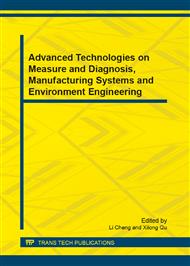p.118
p.122
p.127
p.135
p.139
p.144
p.148
p.153
p.157
Railway Vertical Section Automatic Design
Abstract:
This paper was enlightened by Douglas-Peucker Algorithm, using the algorithm in the application of railway vertical section automatic design. Firstly, the paper introduced the basic principle of Douglas-Peucker algorithm, based on which, the flow path of railway vertical section automatic design was formulated according to the design criterion. Secondly, the algorithm result was applied in Mengxi Coal Transportation Corridor, the quantity of the railway was acquired after automatic design with improved Douglas algorithm, through the quantity, and it could be proved that the algorithm did design a smooth slope. Automatic design in railway and road has become an inexorable trend, since it reduced the human cost, improved efficiency and avoided artificial defects.
Info:
Periodical:
Pages:
139-143
Citation:
Online since:
June 2013
Authors:
Price:
Сopyright:
© 2013 Trans Tech Publications Ltd. All Rights Reserved
Share:
Citation:


